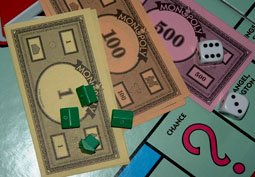By: Carl Brannon
Managing personal finances is an important skill to learn. Many adults don’t have the proper education necessary to manage their personal finances. Starting financial education when students are young will help to solidify the principles of personal finance and create responsible borrowers and financial managers. Personal-finance activities for middle-school students should be fun and engaging but also highlight important techniques of personal-finance management.
The Stock Market Game
Make a large chart with each student’s name. Give your students the stock pages from a local newspaper and tell them that they each have $1,000 to spend on whatever stocks they’d like to buy. Encourage students to think of companies they’d like to invest in. Once they’ve made their choices and purchased their stocks, have each student record his choice, along with the value of the stock that day, in his journal. Every few days, bring in the newspaper so they can look up the new values of their stocks. The students should calculate the current worth of their stocks, as well as the amount of money they’ve made or lost. Give a prize to the student or students who earn the most money.
Candy Savings
Teach the concepts of savings and compounding interest by giving each of your students a set number of small candies, such as M&Ms or Skittles, in a paper cup. Tell them that they can eat their candies now or save them in the cup. Throughout the day, wander by students’ desks and put additional candies in the cups of the students who have saved a few; give more candies to the students who are saving more. At the end of the day, discuss everyone’s final totals and talk about why it was a good idea to save the candies rather than eating them right away.
Money Math
Give students between five and eight basic tasks to perform, such as wallpapering a room, buying a car and making dinner; give them a budget to accomplish each task. Offer the students a few differently priced options to complete each task, such as $3 per foot for paint, $6 per foot for wallpaper and $8 a foot for paneling. Then have each student formulate a plan to accomplish each of the tasks within her budget limitations. Students will have to calculate different expenditures and figure out how to save money when certain luxuries aren’t needed.
Auction Bucks
Reward students for good behavior with fake money you’ve printed in advance. Tell them that this money can be used for purchases from a classroom store. Periodically sell items such as candy or toys from your store, but warn students that your inventory changes and that bigger, more valuable items may appear in your store later in the year. Every once in a while, feature a few expensive items that students can only purchase if they’ve been saving their money.



